THRYVE
Business & Product Design
Thryve was a born out of my Masters thesis during my time in the Graduate Design Program at Stanford University. The primary goals of the thesis program is to utilize design-thinking and user-research techniques to develop a product and foster radical collaboration by recruiting the most eligible people from all over campus to become part of the team.
Before I go any deeper into the project, I would like to thank my teammates, Kenneth Fernandez, Alice and Eli for an amazing experience and giving me the opportunity to work alongside them. And my deepest appreciation for my mentors Erin MacDonald, Bill Burnett, David Kelley and Sean Follmer for their support and feedback.
The Thryve team was at Maker Faire Bay Area 2016 showing off the system to many interested growers.

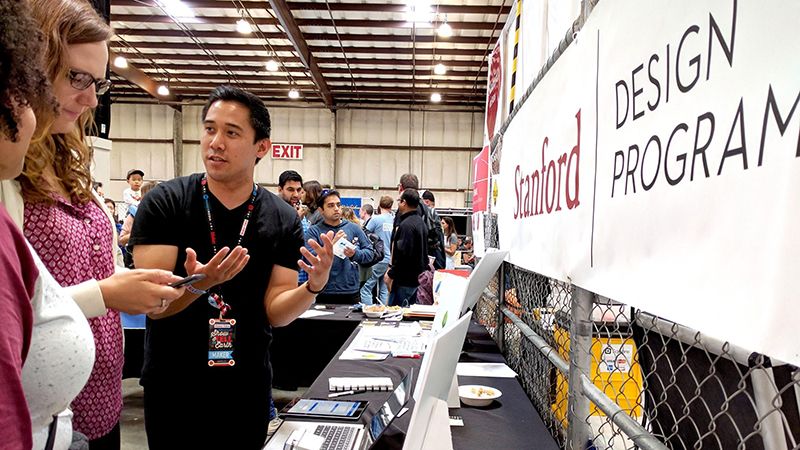


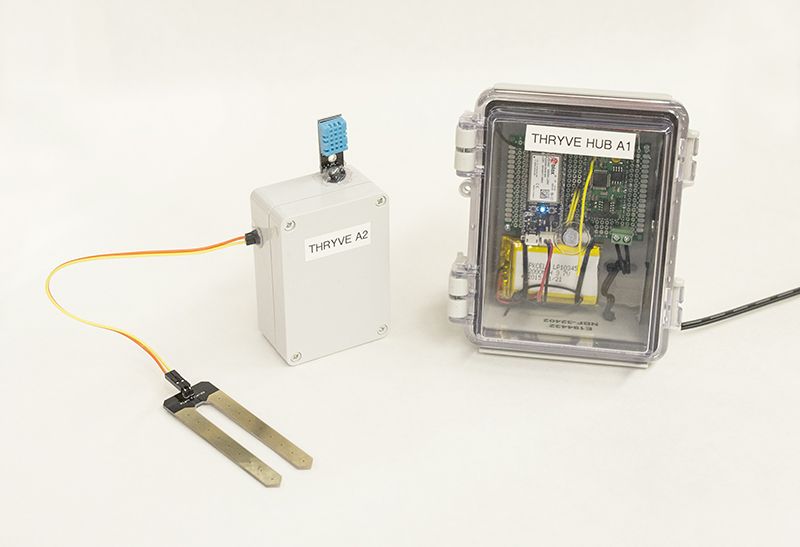
On the left is the latest prototype of the Plant Sensor in a water resistant box that holds the processor, sensors and batteries. On the right is the sensor hub.
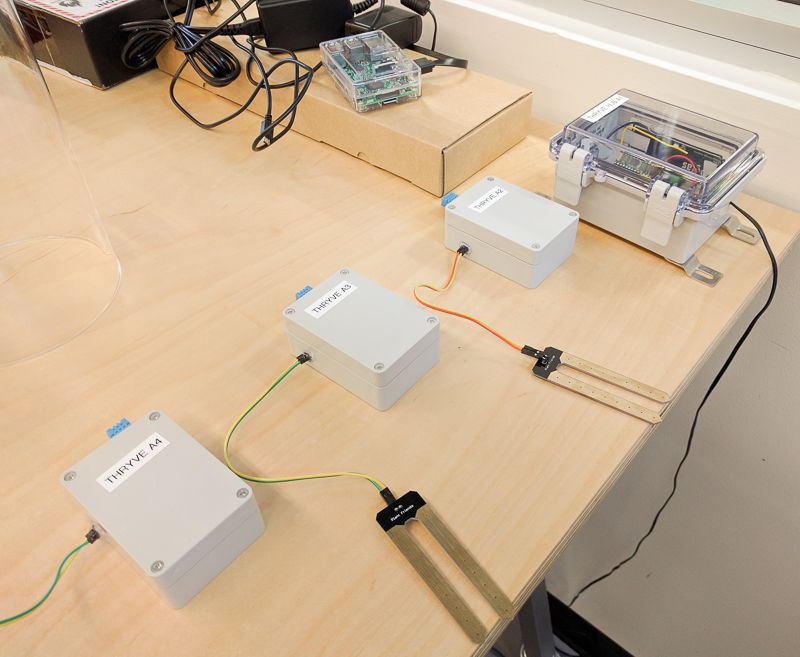
A fleet of Plant Sensors and Sensor Hub.

This is a sample of the raw data gathered from the prototype Plant Sensors. To a user with no horticultural and computer science exprience, the raw data would look like an alien language to them. The goal of Thryve is to make this data understandable to beginners but also translating it in a way where it is actionable.
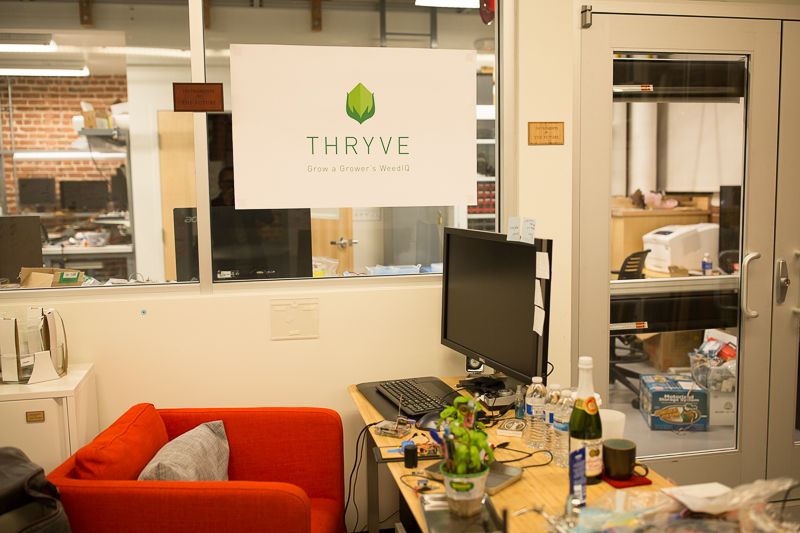
Thryve's HQ in the Design Loft.

Thryve hardware prototyping area in the Design Loft.
Medical cannabis can be a life changing medicine for individuals battling devastating illnesses such as HIV, Alzheimer's, epilepsy, or MS and patients many cannot afford the continual expense of purchasing cannabis from a dispensary.
Thryve offers a platform-as-a-service ( PaaS ) for consumers that want to grow their own medicinal cannabis. It consists of the Plant Sensors that monitors a plant’s vitals and a Sensor Hub that connects the Plant Sensors to the Thryve Almanac knowledge base. Thryve helps the beginners avoid common pitfalls when growing for the first time and helps experienced growers grow better plants.
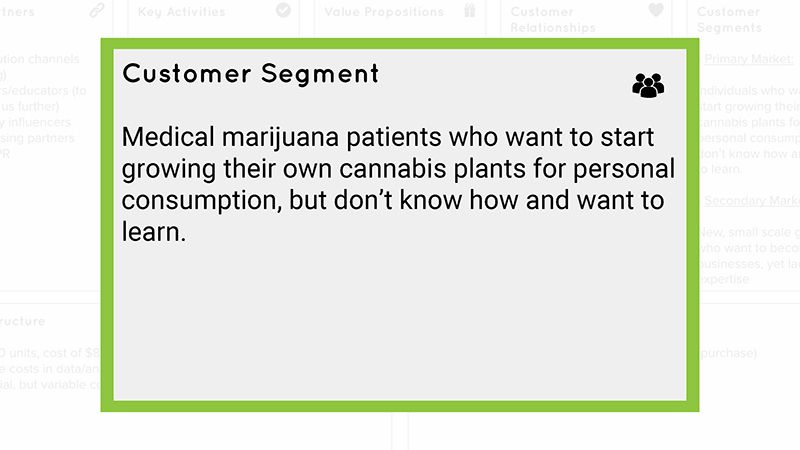


This is the design of the final production-ready Plant Sensor. Thryve’s design vernacular focuses on smart and professional.
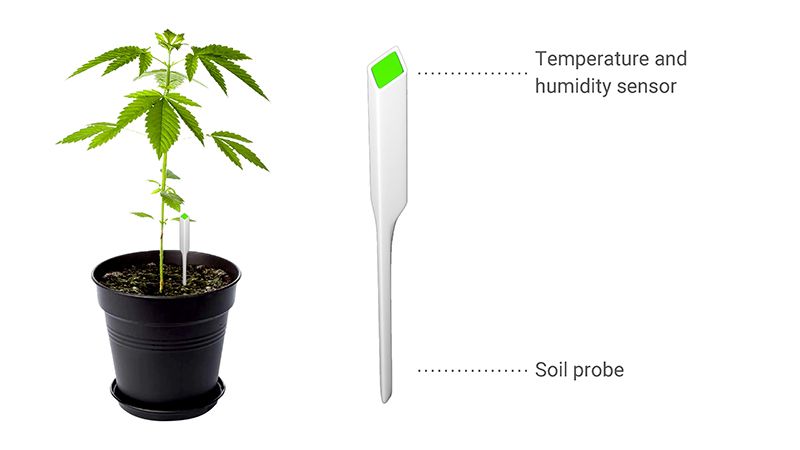
The Plant Sensor have a streamlined look and feel, and the size is small and compact. A single Plant Sensor supports one plant.

Shown here is the work-like prototype of the Thryve app.
The most common pitfall for beginner growers is not knowing if they are providing the ideal environment for their plant to grow. Thryve's software analyzes the the environmental data from the Plant Sensors and tells the user if their growing environment is ideal and if not, the software will guide the user on how to create the best conditions for the plant to Thryve. ;)
Thryve’s software also guides the user through each growing stage by asking questions about the plant such as leaf colour, the number of leaves the plant has etc. In conjunction with the data provided by the Plant Sensors, the software can determine the relative health of the plant and reassure the user their plant is doing a-ok.
In essence, Thryve's software is the ultimate cannabis mentor, shepherding the beginner grower's journey to become a master grower.

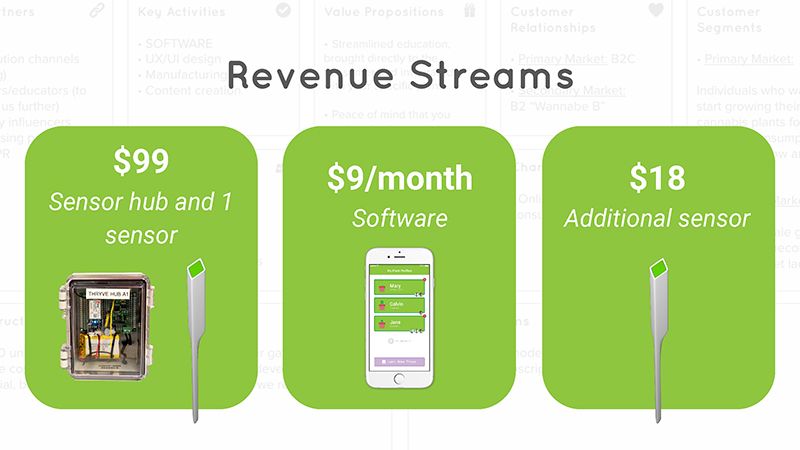
Thryve’s flexible pricing and platform scalability allows anyone at any skill level to join the Thryve ecosystem. A starter kit which consists of one Plant Sensor one Sensor Hub is $99. Each additional sensor is $18 and the software is $9 per month which grants the user access to Thryve’s unique step-by-step software, vast knowledge base and data analytics.
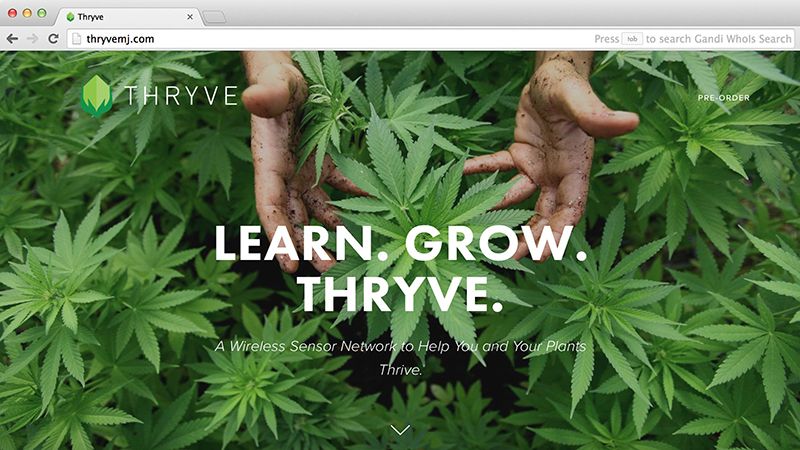
thryvemj.com was setup to test product market fit by taking preorders.
My interest lie in our relationship between nature and technology and so I began my research into agriculture and ag-tech, then narrowed down to a few areas where I felt would make an interesting design project:
• Increasing age of farmers and no younger generation to replace them.
• People are becoming increasingly dissociated with where their food comes from and how it is produced
• Climate change is affecting the way we use land and water for agriculture.
• Ag-tech industry will continue to grow for the foreseeable future. Investors are already pouring money into securing land, agriculture related technologies and research.
• Ag-tech and big data will help drive decisions in how to utilize land, water use, and increase production.
As a team, we narrowed down the areas to a specific group of crops and users so that the project would be more manageable in both time and scope. We focused on high-value crops such as cannabis, wine grapes, saffron etc. The business opportunities in high-value crops in combination with the potential of technology and data that can impact this area formed the early foundation of the project.

Farmers today are faced with constant pressure to improve yields and increase crop output. In the case of high-value crops such as legal marijuana – a 2.7 billion dollar industry, the stakes of increasing output to meet demand are even higher. By 2019, the legal marijuana market is expected to increase to 11 billion dollars.
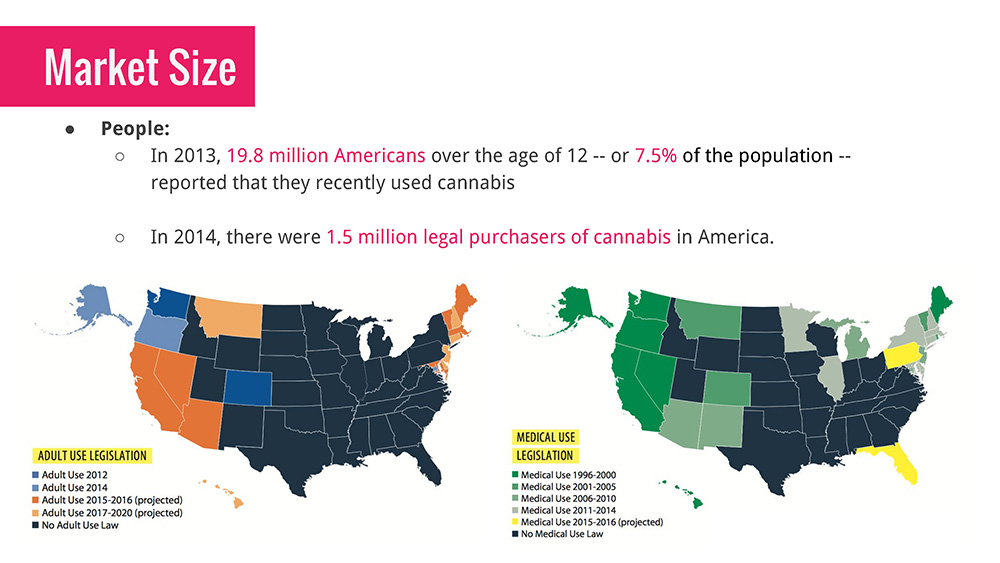
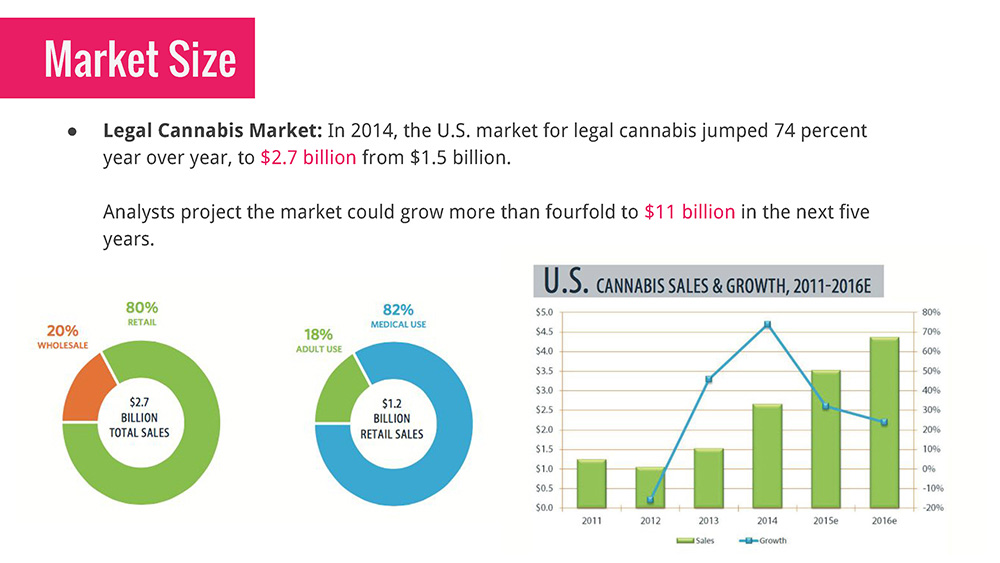
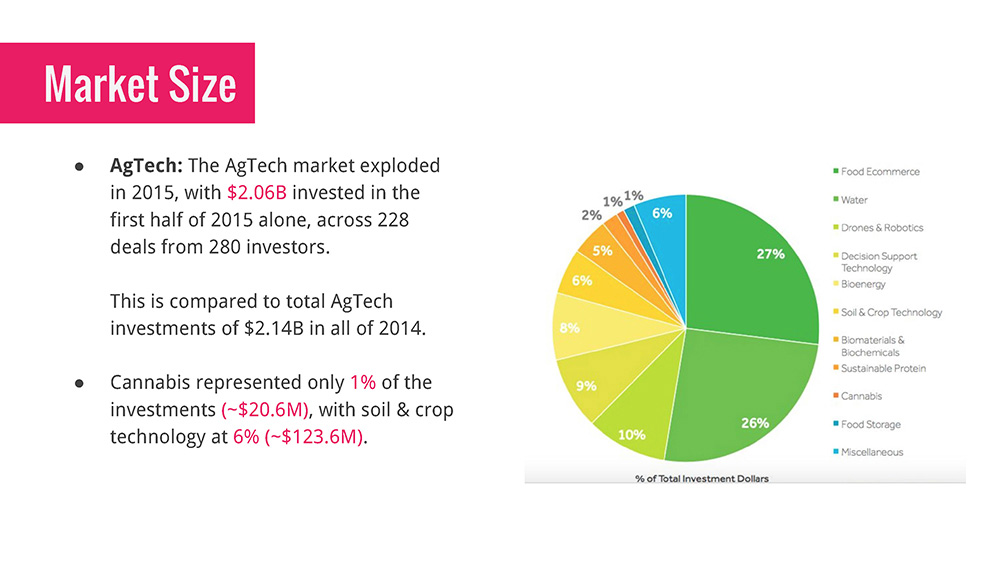
Unpredictable climates make outdoor farming extremely difficult and high risk. Although the switch to indoor farming takes weather out of the equation, it still comes with its own set of problems. Monoculture and tight spaces enables the spread of disease and pest very quickly which is tightly related to environmental and ecological factors. Plant physiology and morphology is complex and there are a whole set of unknown factors. A slight change in humidity, soil moisture levels, pH levels etc can mean continuing growing into the next season or closing down a business.

What if farmers can predict catastrophic events such as the plant disease and pest invasion? How can farmers make the right decisions to improve crop health? What would happen if farmers have the ability to enhance their sense of intuition?
We want to investigate how can data empower farmers. Can environmental sensor networks provide farmers with intuitive, actionable insights? How can the data be interpreted in a meaningful way? How can data and the presentation of that data can improve farming?
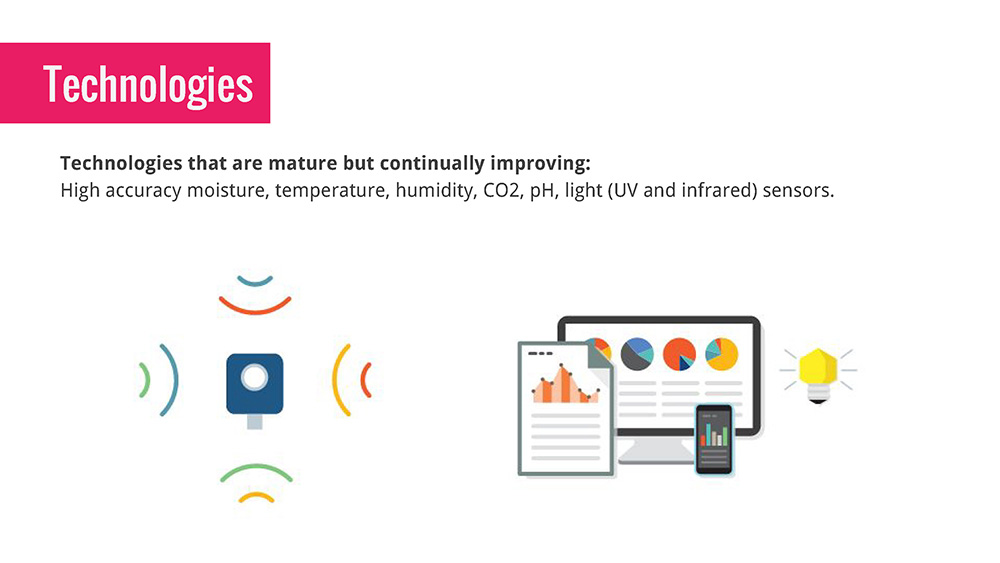
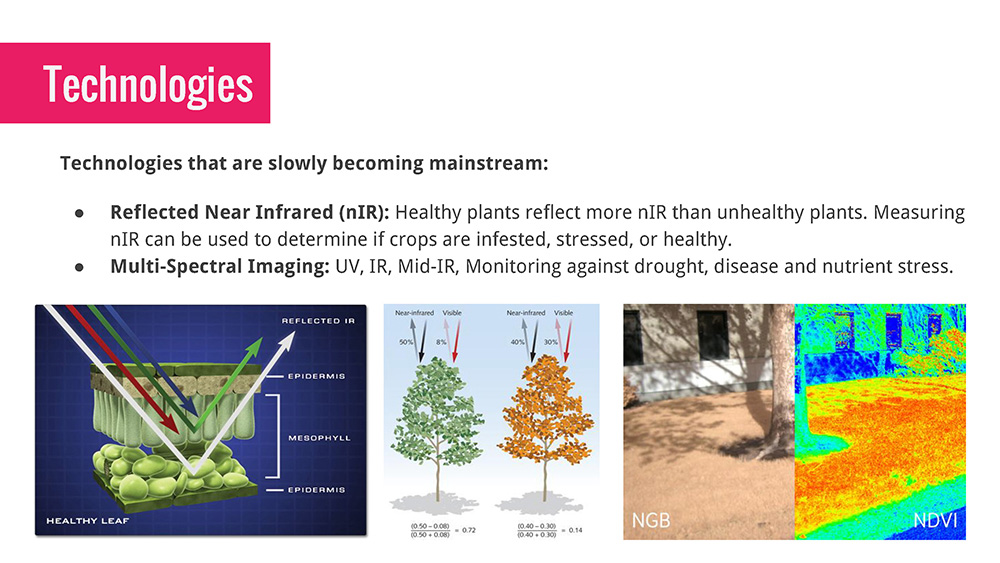
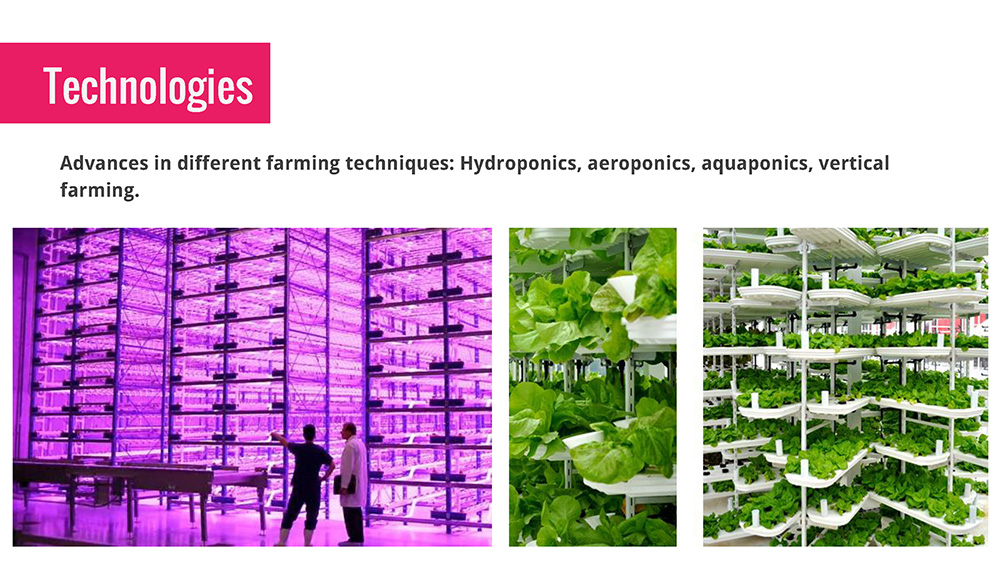
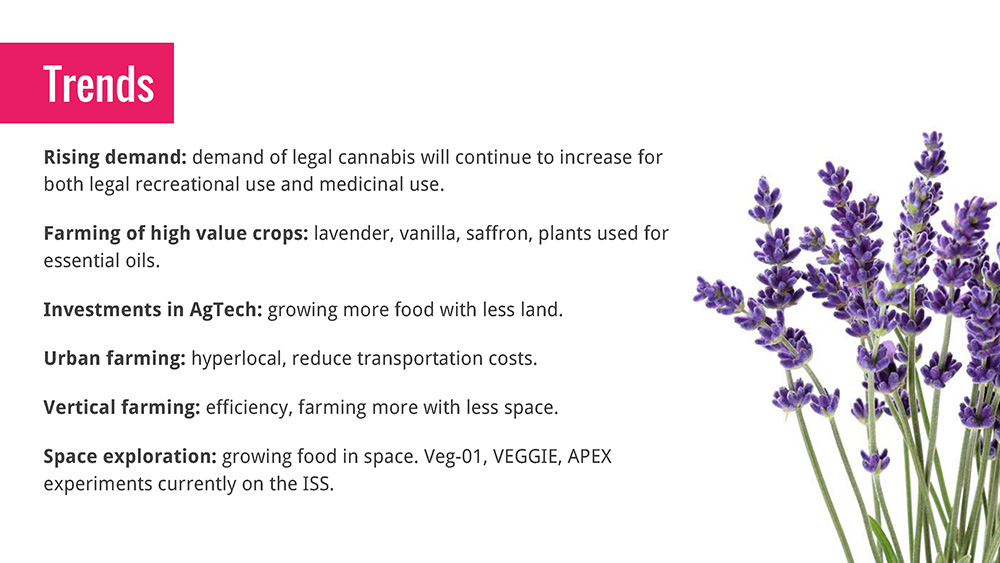
The insights that come out of this project can have the potential to be applied to agriculture specifically in vertical farms, urban farms, hydroponics, aquaponics and possibly space exploration.
We began interviewing legal cannabis growers both large (10,000+ plants) and small (< 8000 plants), asking them about their day-to-day activities and why they chose to the profession in the first place. We gleaned some extremely interesting insights from their personal stories and thoughts about the future of cannabis.
We also talked to organic farmers on growing techniques and their relationship with food as well as NASA scientists using multispectral imagery to determine the ecological health of an area and individual plants. Our adventure also lead us to UC Davis’ high-tech greenhouses which housed some amazing research on different types of crops and how data is informing their work. After conducting our interviews, it was off to post-it notes and dry-erase boards:

Different areas of the project that will need to be addressed.
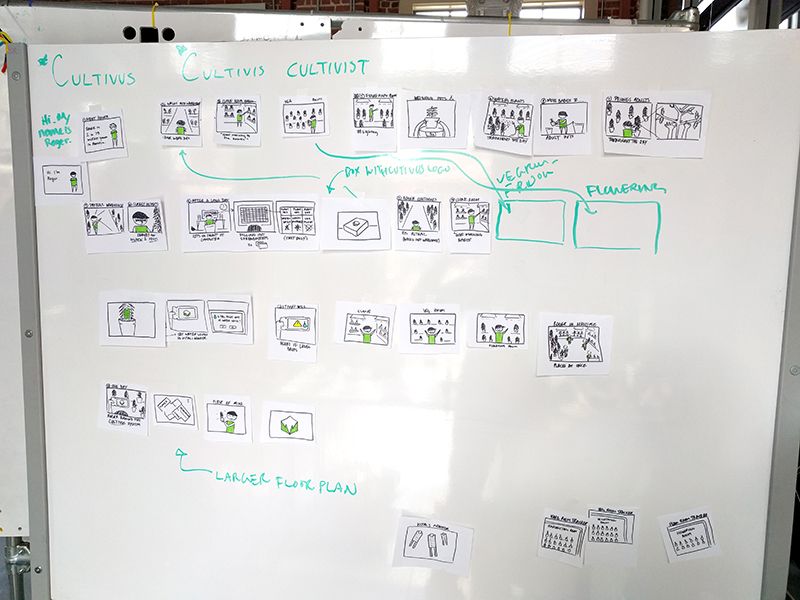
Storyboards for a grower's typical day.

UI / UX ideas for first prototype.
In the early stages, Thryve was called Cultivus and the product focused solely on the master growers that are managing cannabis grow houses. The system provides the master grower with actionable data so sounds decisions can be made to get the best harvest possible. This was a business to business model where the platform would be sold only to businesses.
Here are the features of the Cultivus system at a glance:
• Help the master grower monitor plant vitals
• Reveal micro-climates within the warehouse
• Allows the master grower to quickly identify sick plants
• Act as a beacon to signal the plant’s location
• Help the master grower flag each individual plant’s growth stages
• Reinforces their need to be close to and interacting with the plants
• The system requires the master grower’s expertise
• Enables the master grower to take notes on the fly and put them in a knowledge base
• Allows the master grower to flag problem plants and delegate his work to his helpers
This is the first prototype of the Cultivus system:
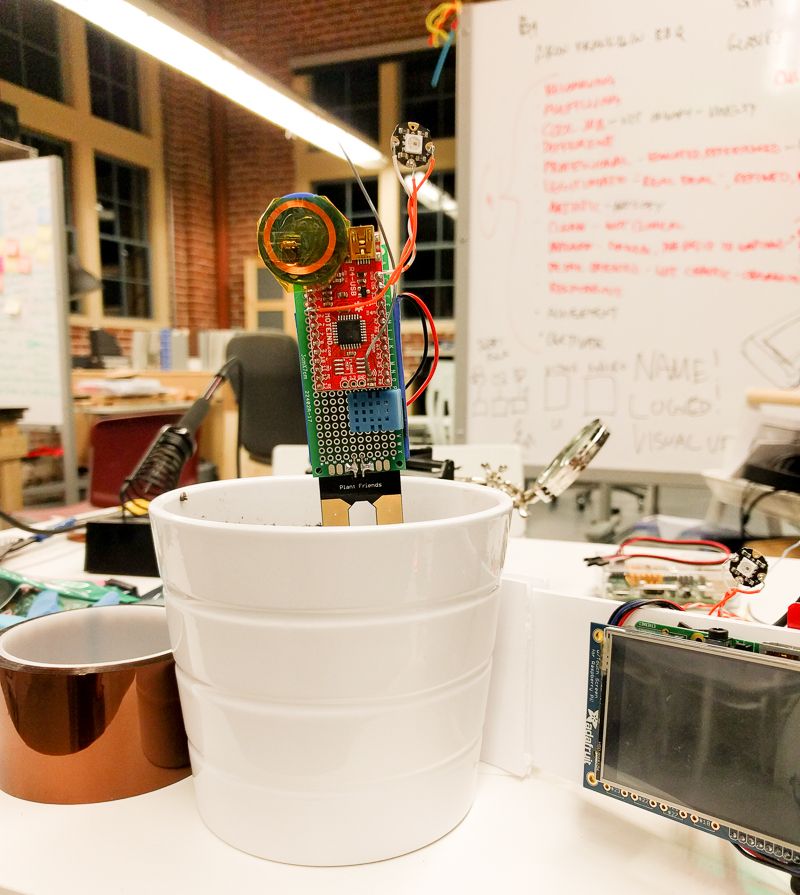
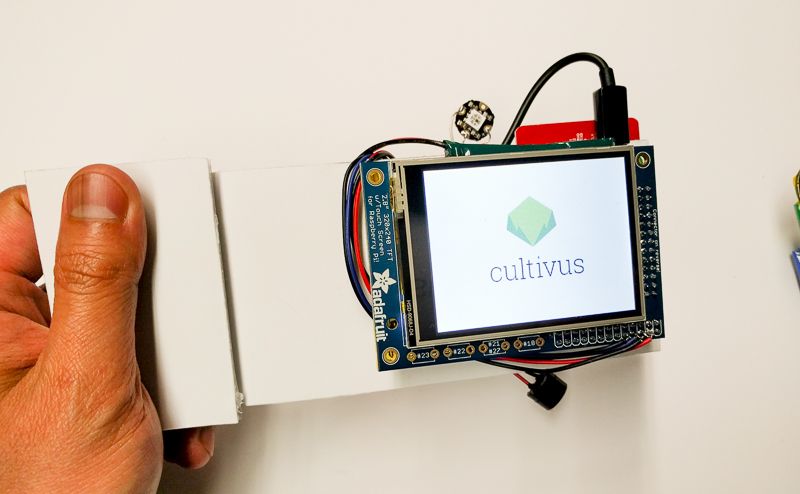
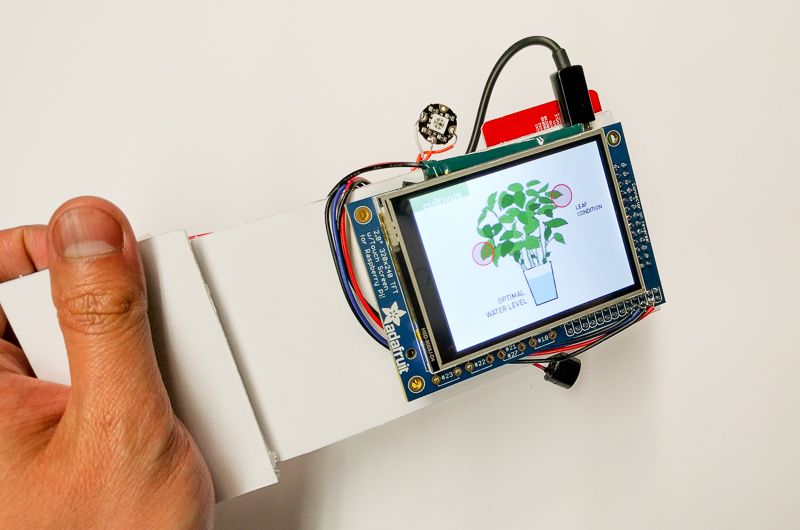
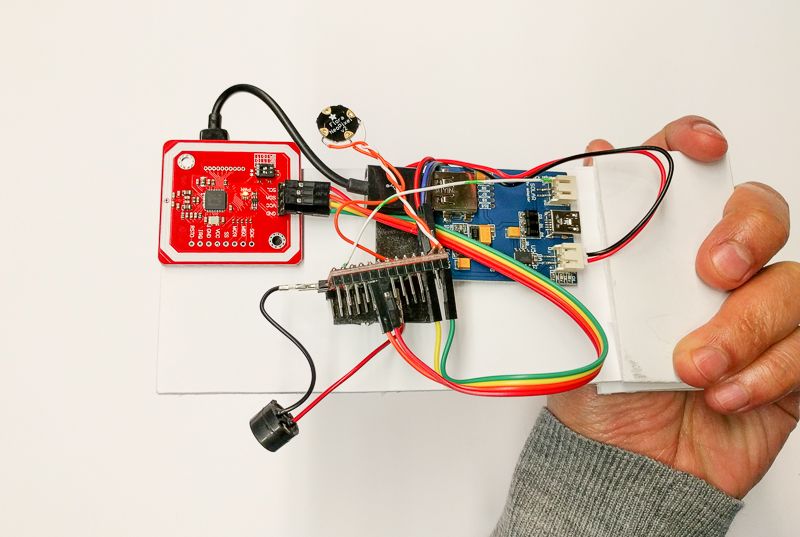
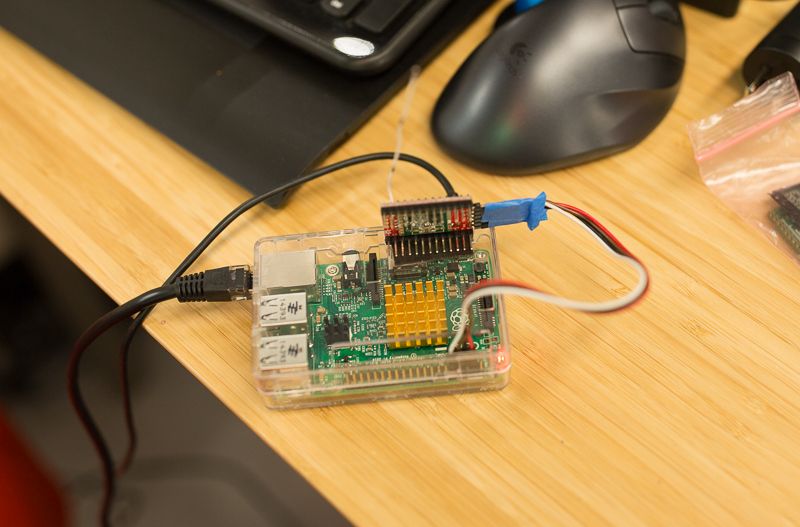
During the conception of the project, the legal cannabis industry was still in a legal grey area. This resulted in our target users, the legal growers, being secretive and reserved. In addition, the master growers thought their current methods were "good enough" and didn't see any need to change or adopt a new process.
After our initial Cultivus prototype, we had trouble connecting with our users and this was a signal for us to pivot the project from a B2B model to a B2C model and change to a platform-as-a-service ( PaaS ) for end consumers that want to grow their own medical cannabis. We rebranded the system from Cultivus to Thryve as most people thought Cultivus was too masculine and Thryve had a more positive connotation.
The early Thryve prototypes still relied on a NFC/RFID reader. This was removed in the later prototypes to streamline the user interaction.
Here are pictures of the different Thryve prototypes:
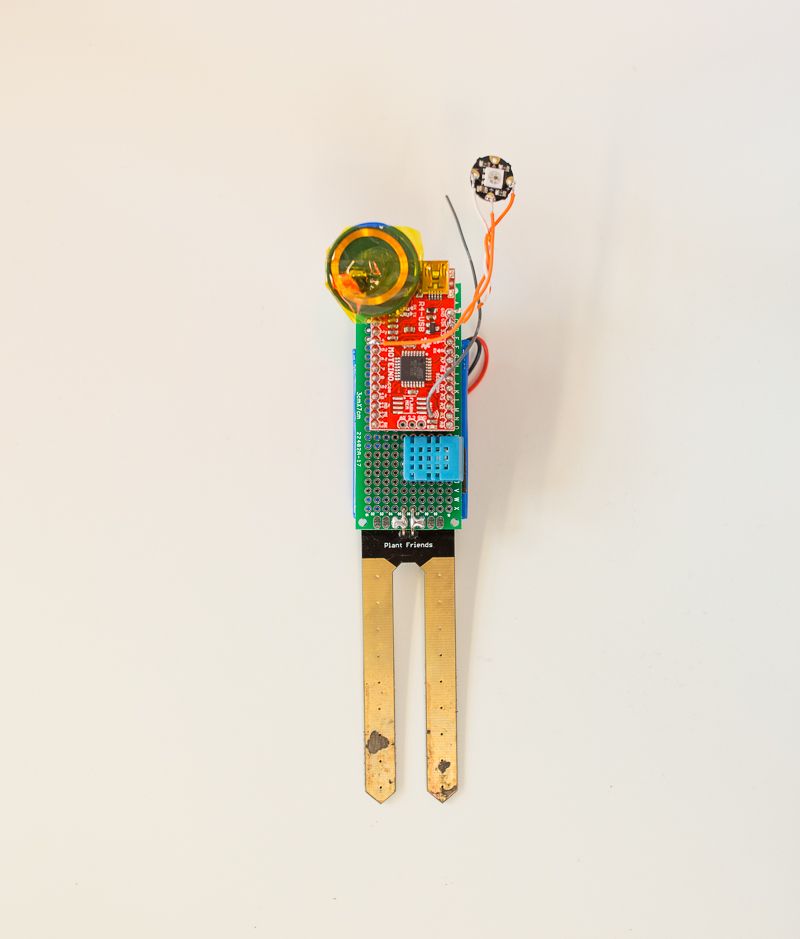
Early version of the plant sensor.
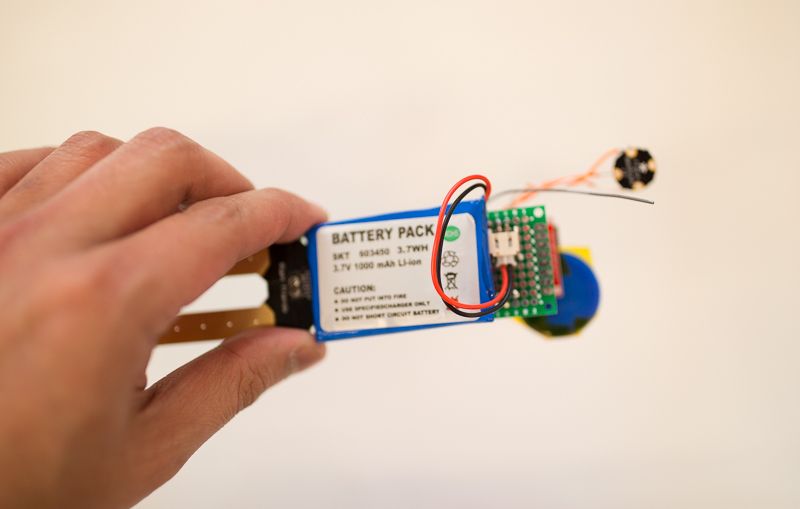
Back of the plant sensor with LiPo battery.

The plant sensor deployed.

A tablet is used to interact with the Thryve system. The red square is the RFID reader.
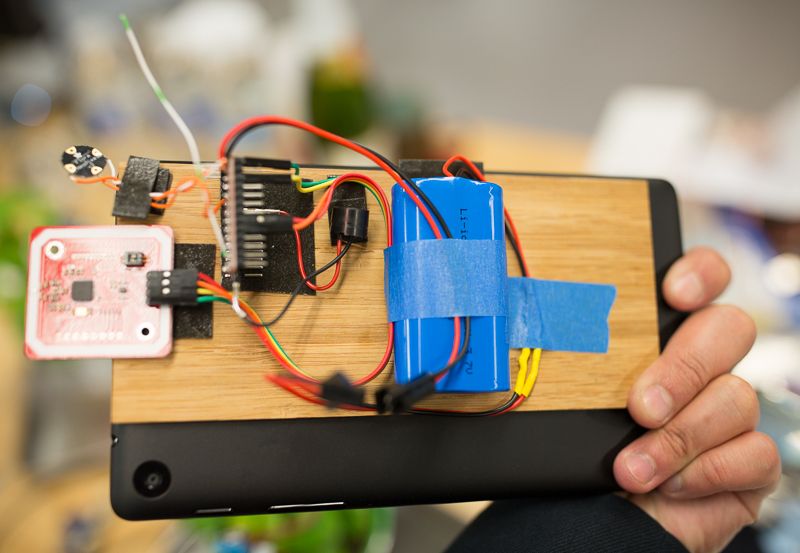
The back of the tablet with the RFID reader, tranciever and LiPo battery.
Created by Dickson Chow, Kenneth Fernandez, Alice, and Eli.
Everything was a group effort and throughout the project we taught each other in our respective specialties:
User research, design thinking, hardware and software lead: Dickson Chow.
UI, branding, logo and graphics lead: Kenneth Fernandez.
Business lead: Alice.
Strategy, research lead: Eli.
Erin MacDonald
Assistant Professor of Mechanical Engineering, Stanford University
Bill Burnett
Executive Director of the Product Design Program, Stanford University
Adjunct Professor in Mechanical Engineering – Design, Stanford University
David Kelley
Donald W. Whittier Professor in Mechanical Engineering, Stanford University
Founder of the Hasso Plattner Institute of Design, Stanford University
Founder and Chairman of IDEO
Sean Follmer
Assistant Professor of Mechanical Engineering, Stanford University

